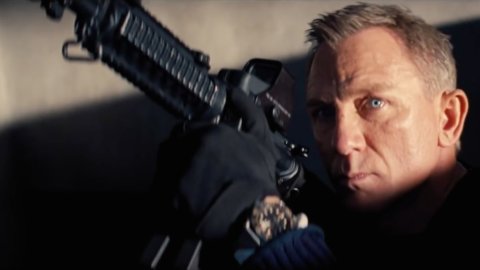James Bond interrupts a happy vacation and finds himself grappling with something and someone stronger than the distant and ancient Spectre: a diabolical character who takes possession of a very dangerous weapon of mass destruction. This in a nutshell is the plot of the last 007, no time to die, in theaters for a few days. More than 50 years have now passed since the beginning of the golden three-year period of the Ian Fleming saga, when they appeared in cinemas one year after the other before Licence to kill ('62), then From Russia with love ('63) and shortly after Goldfinger mission considered, perhaps not without reason, the masterpiece and milestone of the films that followed. Since then the whole real world has changed but 007 still remains the same.
The Soviet empire, in that distant past the matrix and origin of all evils, has long since been replaced with other enemies of various geopolitical nature and the same Spectre it has become increasingly ambiguous in its matrix of origin. What remains unchanged is the object of the clash: originally there were atomic missiles, now instead there are selective viruses, in this case nanoboot, capable of exterminating an entire ethnic group or an entire continent (in this case the Africa) by selecting the chromosomes of the victims.
Even fundamental ingredients can change, such as the protagonist (in this case Daniel Craig), or his enemies (precisely the usual Spectre) or still some Bond Girl but the substance always remains the same: the eternal struggle of the good guys against the bad guys who, obviously as it should be, in the end, always lose. The narrative formula of 007, with few exceptions, has been successful and rarely at the box office have the films that have told the very long saga (over 25) failed to achieve the revenue. In the case of no time to die not only did it awaken the market at the beginning of the season after the dramatic pause of the pandemic (after a few days of programming it made over 120 million dollars) but it also aroused lively traffic in the streaming vision of old films, positioning the request for the glorious 007 years spent in the first places of the most downloaded films on the net. The success is justified: the legendary secret agent with a license to kill for a good purpose in the service of her Majesty the Queen gives what he promises and even something more with over two hours of spectacular viewing, perhaps even excessive. It should be added that the cost of the ticket includes a magnificent opening theme which alone deserves attention.
no time to die re-proposes all the classic elements of the genre starting from the first sequences of the formidable Aston Martin in action in the alleys of Matera, armed with all the most ingenious gadgets and capable of taking 007 out of any dangerous action, prepared by the ever-present Q, a genius of electronics and smart weapons. There is also the "sentimental" aspect linked to the current Bond Girl (an anonymous one Léa Seydoux already seen in the previous Specter) with which, in this case, there is something more than a tender affection. Finally, there is no lack of reference to the contemporary with the update on the great dangers looming over all of humanity, starting in this case, precisely, from viruses capable of killing millions of people. Finally, there is the pure action, as well as the breathtaking chases, the infinite and improbable shootings, the hand-to-hand fights which, of course, James Bond always wins. The film ends with a surprise ending and this prevents us from providing further narrative elements that can lead us to guess what will happen at the end of the vision.
"My name is Bond, James Bond" is the trademark that marks an era of contemporary cinema and perhaps it is no coincidence that it was born almost simultaneously with another vein of the big screen: Sergio Leone with his first great masterpieces: A Fistful of Dollars ('64), For a Few Dollars More ('65) and The Good, the Bad and the Ugly of '66. The difference is that that kind of film is almost extinct (except for the inheritance collected by Quentin Tarantino) while the character created by Ian Fleming continues to give emotion and adrenaline. For fans of the genre, not to be missed.





